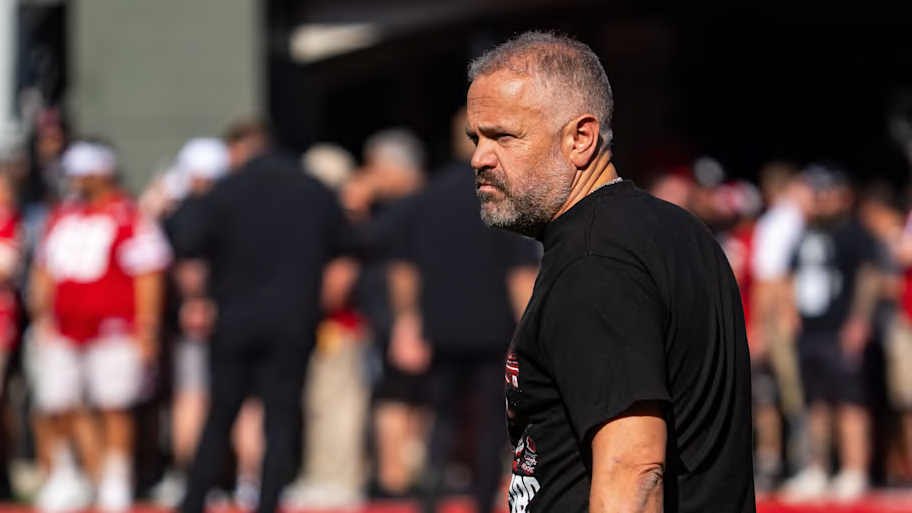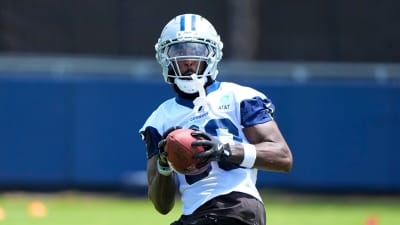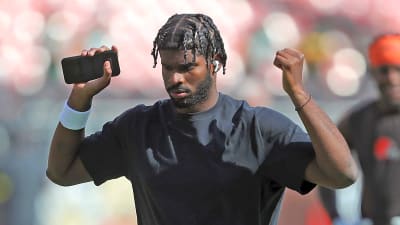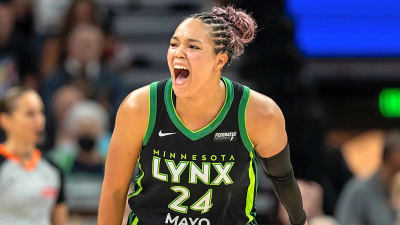
Nebraska’s Matt Rhule, a football coach by trade, is like most men filling that position: He wants to run the ball more.
Forever, that’s the risk-averse stance favored by coaches from college football’s power conferences to your local high school team. It’s the rare coach — a prerequisite is having the right quarterback — who wants to throw the ball all over the field.
Rhule was asked during the Huskers’ bye week about the method of play that can win in the Big Ten, where the Huskers are 0-1 (3-1 overall) after a 30-27 loss to Michigan.
“I mean you want to run the ball more,” Rhule said. “I always want to be able to run the football more than we did. I think you need to be 100-150 yards rushing to win.”
Taking what Rhule said, “100-150 yards rushing to win” per game, here are the Huskers’ net rushing yards in each game this season:
* Cincinnati: 110 yards
* Akron: 234 yards
* Houston Christian: 192 yards
* Michigan: 43 yards
Nebraska’s statistics are tainted when you factor in the Akron and FCS Houston Christian games. You can’t accurately gauge an offense when the competition was so weak.
So, let’s toss out the Akron and HCU games. Against Power 4 competition, Nebraska has rushed for 152 yards, an average of 76 yards per game.
That falls short to what Rhule wants and what he believes is necessary to win in the rugged Big Ten.
“That being said, we had every chance to win that [Michigan] game,” Rhule said. “I don’t want to start panicking about if we are doing too much of this or too much of that.”

Huskers’ passing attack effective
Rhule knows he has an excellent quarterback in Dylan Raiola. The sophomore could have led the Huskers to victory over Michigan if he had a second or two to throw.
The unrelenting Wolverines’ pass rush sacked Raiola seven times and it looked and felt as if he was under pressure on nearly attempted pass play.
“When Dylan had time, everyone was open,” Rhule said. “We scored 27 points and we would have killed for 27 points at times last year versus a pretty good defense.”
What the Huskers’ numbers say
There’s really no statistical equality between the Huskers’ rushing attack and their passing attack. The Huskers pass the ball with great success and efficiency.
“I do think we are spreading the ball around and attacking people. I think this is a good week [bye week, before playing Michigan State on Oct. 4] for us to go back and look at all that. We can say to ourselves, ‘What are we doing well and can we do better.’ ”
Converting in the red zone
The Huskers converted 3-of-4 red-zone opportunities against Michigan but only one was a touchdown. Two of the scores were field goals and there also was a missed 44-yard field-goal attempt.
Nebraska ranks 96th in red-zone efficiency. The Huskers have seven rushing touchdowns, seven passing touchdowns and five field goals in 24 red-zone opportunities, a .792 scoring percentage.
Nineteen FBS schools have scored on every red-zone chance, including Nebraska’s opening-game opponent Cincinnati and Big Ten schools Oregon, UCLA, Northwestern and Washington.
On Nebraska’s first possession, it turned over the ball on downs at the Michigan 5. The Huskers couldn’t convert a third-and-three and a fourth-and-two. Emmett Johnson gained one yard on third down and a Luke Lindenmeyer reception on fourth down came up just short of a first down.
That empty drive prevented the Huskers from gaining early momentum in a game that was expected to be close and gritty … and it was.
Nebraska’s DNA is run-oriented and Rhule wants to push that. He knows the better the running game, the better the passing game will be. He already has a weapon in Raiola. A stronger running attack will keep defenses honest about protecting against the run.
Rhule knows the potential is there for a greater offense. He also knows the offensive line must improve — apparently an emphasis during the bye week. Michigan’s defensive front seven had its way with the Huskers’ running game and also gave Raiola fits.
Nebraska has issues on both sides of the ball — the defense allowed 30 points to Michigan, whose quarterback could hardly complete a downfield pass. The Wolverines scored on three long touchdown runs.
There’s another benefit from a stronger Nebraska running game — controlling the ball and time of possession. Football is a beautiful event when everything clicks. When it doesn’t, it’s time to regroup and figure out the best way to improve.
It’s why the football gods created bye weeks.
More must-reads:
- Vanderbilt QB Diego Pavia gets into heated exchange with Alabama fan
- CFB Week 6 winners, losers: Miami may be the best team in the country
- The 'MLB playoff debut strikeouts leaders' quiz
Customize Your Newsletter
 +
+
Get the latest news and rumors, customized to your favorite sports and teams. Emailed daily. Always free!








